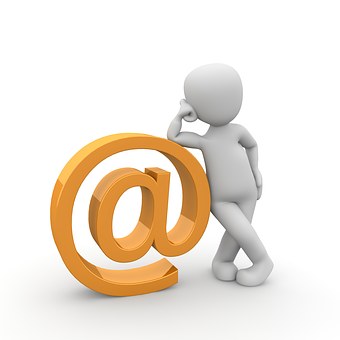Email Not Receiving
In the vast landscape of digital communication, emails stand as a cornerstone, ensuring seamless and swift interactions. Yet, there’s an increasingly common roadblock many encounter: situations where they cannot receive emails or find themselves unable to receive emails altogether. This frustrating hiccup, though seemingly straightforward, can have a myriad of underlying causes, often leaving users puzzled and seeking solutions.
This guide is designed to shed light on this prevalent issue. We’ll begin by exploring the multifaceted reasons that may lead users to exclaim, I cannot receive emails! or Why am I unable to receive emails? From server issues to account settings, the culprits can vary widely. Next, we’ll delve into practical solutions to rectify this predicament, ensuring that your inbox is once again bustling with incoming messages. Finally, a deep dive into configuring mail’s incoming server settings will be presented, offering insights to those keen on understanding the nuts and bolts of their email platforms.
So, whether you’re a seasoned email user facing this challenge for the first time or someone looking to preemptively understand and counteract such issues, this guide promises a comprehensive look into the world of email reception problems. Let’s embark on this journey towards uninterrupted digital correspondence.
Emails Not Receiving Issue – Causes:
In our rapidly digitized world, email stands as a crucial mode of communication. But, every so often, users are baffled by an unexpected problem: Email Not Receiving. While the notification ping of an incoming email becomes a familiar sound for many, the absence of it raises concerns. Let’s break down some of the reasons you might find yourself lamenting, “Why is my Email Not Receiving any new messages?”
-
Email Server Issues:
One of the primary culprits behind Email Not Receiving is disruptions at the server level. Whether it’s maintenance, unexpected downtimes, or server overloads, these issues can temporarily halt incoming emails.
-
Email Spam Filters:
Modern email services employ stringent spam filters. Sometimes, these filters might be overzealous, leading to genuine emails being redirected to the spam folder. This could be especially true if you’re not receiving emails from one person consistently, as their messages might be mistakenly flagged.

-
Blocked Emails Senders:
In attempts to manage spam or unwanted contacts, users sometimes block certain senders. If you’re not receiving emails from one person, it’s worth checking if they have been added to your blocked senders’ list by accident.
-
Email Mailbox Quota Exceeded:
Every email service provides a certain storage quota. If your inbox is full, you might experience an Email Not Receiving situation as new messages can’t be stored.
-
Incorrect Email Address:
If you’re not receiving emails from one person, it’s always a good idea to double-check if they have your correct email address. A minor typo can reroute their messages elsewhere.
-
Email Forwarding:
Sometimes, users set up email forwarding, which sends incoming messages directly to another address. This could lead to the perception of Email Not Receiving if not remembered.
By understanding these reasons, users can better troubleshoot the issue at hand, ensuring their inboxes remain active and up-to-date. It’s essential to periodically review settings and stay informed about server statuses to minimize email reception issues.
Fix Email Not Receiving Issue – Solutions:
The digital realm is undeniably efficient, but like all technologies, it comes with its set of challenges. One of the most common hiccups users face is when Emails not being received. The anticipation of waiting for an important email and realizing you’re Not getting emails can be both frustrating and disruptive. However, with a systematic approach, this issue can be addressed and resolved.
-
Check Email Spam Folder:
Often, genuine emails end up in the spam or junk folder. If You’re Not getting emails, it’s prudent to first check here. Mark any legitimate Emails Not Being Received in your main inbox as ‘Not Spam’ to train the system.

-
Review Blocked Email Senders List:
Ensure that the sender’s email address hasn’t been accidentally added to the blocked senders list. If you’ve noticed specific Emails Not Being Received, this might be the cause.
-
Inspect Email Filters and Sorting Rules:
Email filters can redirect incoming emails to specific folders. If you’re not getting emails, verify if any filters are sending emails to other folders like archives, personal, or custom ones.
-
Ensure Email Inbox Isn’t Full:
An overflowing mailbox can prevent new emails from coming in. If your storage is near or at capacity and you’re not getting emails, consider deleting old or unnecessary emails and emptying the trash folder.
-
Verify Email Forwarding Settings:
If emails are set to be forwarded to another account, you might feel you’re not getting emails. Review and modify these settings if necessary.
-
Check Email Account Settings:
Sometimes, email server settings can cause disruptions. If specific Emails Not Being Received, ensure that the incoming server setting is properly configured. For a step-by-step guide to configuring the Incoming mail server settings, please refer to our next section of the page.
-
Update Email Client:
Outdated email clients can cause reception issues. Ensure your email application or software is updated to the latest version.
With these troubleshooting steps in hand, the challenge of emails not being received becomes more manageable. Regularly reviewing and updating your email settings ensures a smoother, uninterrupted email experience.
Email Incoming Server Settings – Configuration:
When faced with email reception dilemmas, one of the pivotal areas to investigate is the Incoming server settings. These settings, especially related to IMAP settings and IMAP server settings, govern how your email client communicates with your email service provider’s server. An incorrect configuration can often be the culprit behind not receiving emails. Here’s a detailed guide on how configuring the Incoming server settings can resolve the issue and how to go about it:
Steps to Configure (IMAP) Incoming Server Settings:
-
Open Email Client:
Start by launching your preferred email client or software.
-
Access Email Account Settings:
Navigate to the option related to the ‘Account Settings’ or ‘Mail Settings’ section.
-
Choose IMAP for Email:
When prompted to select between POP3 or IMAP settings, always choose IMAP for better synchronization and flexibility.
-
Enter IMAP Server Details:
In the IMAP server settings section, you’ll need to input details:
- IMAP Server Address (often in the format of imap.emailprovider.com)
- Port Number (commonly 993)
- Encryption Method (preferably SSL/TLS for enhanced security)
-
Email Authentication:
Ensure ‘Require authentication for incoming emails’ is checked. Use the same settings as your outgoing server or provide the necessary credentials.
-
Save and Test Email:
After inputting the Incoming server settings, save the changes. Many email clients offer a ‘Test Settings’ feature. Use this to verify if the configuration is correct.
-
Restart Email Client:
Once configured, restart your email client to ensure all settings take effect.
-
Check Email Reception:
Try sending a test email to your address to check if the IMAP server settings configuration resolved the issue.
Remember, while the above steps offer a generalized approach, specific steps might vary slightly based on the email client you’re using. If uncertain, it’s always a good idea to refer to official documentation or seek help from your email service provider. Properly configured Incoming server settings are pivotal for uninterrupted email communication.
Conclusion:
In the digital era, where instant communication is paramount, encountering issues like Cannot receive emails or being Unable to receive emails can be more than just a minor hiccup. It disrupts the seamless flow of information, putting personal and professional tasks at a standstill. However, as we’ve explored, many of these issues often root back to configurations, particularly the Incoming server settings.
Fine-tuning these settings is imperative. By ensuring they are correctly set up, users can often alleviate the majority of their email reception challenges. It acts as a bridge between the email client and the server, playing a crucial role in the consistent and secure retrieval of emails.
In conclusion, while it’s understandably frustrating to declare, “I Cannot receive emails” or feel Unable to receive emails, it’s empowering to know that the solutions are often just a few clicks away. Regularly reviewing and adjusting the Incoming server settings, especially when switching devices or email clients, is a proactive approach to maintaining a fluid email experience. For further information related to email or to resolve any specific brand email issue, please refer to our Homepage.

